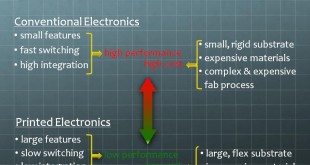The terahertz (THz) frequency band is a fascinating and relatively unexplored part of the larger electromagnetic spectrum (EMS). The terahertz frequency range, lying between electronics and optics (300 to 3000 gigahertz frequencies), can be disruptive force in sectors as diverse as from medical imaging, biological research, pharmaceutical monitoring, manufacturing and quality …
Read More »Passive and active multistatic radars capable of detecting stealth fighters and guiding missiles to destroy them
Stealth technology has proven to be one of the effective approaches to enhance the survivability of Aircrafts. Aircraft/helicopter designers are making them stealthier by reducing their signatures; viz. visual, aural, infrared (IR), and RADAR cross section. Advancements in stealth technologies, as demonstrated by the very low RCS of stealth aircraft …
Read More »DARPA’s ARC and BLADE developed Cognitive and Adaptive Electronic warfare Systems to Counter dynamic wireless communication and radar threats
Electronic warfare provide means to counter adversary’s radar and communication systems while protecting one’s own systems through Electronic Attack (EA), Electronic Protection (EP) and Electronic Support (ES). Jamming systems still rely on classified databases of known emitter signals. As radars emit energy, an onboard receiver characterises the incoming signal and and …
Read More »Cognitive and Adaptive Radar technologies can counter advanced electronic threats
RADAR offers special advantages with respect to other types of sensors including all-day, all-weather operations, long detection distance and, depending on the frequency used, penetration. Moreover, radar can often be carried by a number of platforms, spanning from classic naval and airborne to more recent space-borne, UAVs, such as drones, …
Read More »Weapon Locating Radars (WLR) that can track artillery rounds, rockets, mortar shells and unguided rockets, have been developed by NATO, China and India
Weapon Locating Radars (WLR) are primarily used to detect and locate enemy Artillery units by tracking the trajectory of incoming rounds. They can also provide fire correction of friendly artillery units. WLRs usually can also track mortar shells and unguided rockets. Some WLRs also have limited missile tracking and Air …
Read More »Printed electronics breakthroughs leading to Printed and flexible electronics (PFE) revolution
While the conventional electronics like computers and smartphones is built around silicon integrating billions of transistors and is manufactured using complex, costly and wasteful processes in multi-billion dollar foundries , The printed and flexible electronics aim to replace this by “organic” semiconductors which are long chains of thousands of repeating …
Read More »Transparent Electronics enabled by new materials promise invisible electronic circuitry and opto-electronic devices and radar-absorbing coatings on fighter planes
Transparent electronics is an emerging science and technology field focused on producing invisible electronic circuitry and opto-electronic devices. The transparent electronic devices and transparent electronic circuits have wide range of applications. Transparent Conducting Oxides (TCOs) and Thin Film Transistors (TFTs) are used in the production of transparent electronics. The progressions in …
Read More »Researchers realizing challenging goal of integrating lasers on silicon photonics
The wide adoption of smartphones, high-definition content streamed on social media, the Internet of Things, data saved to the cloud, and artificial intelligence used in massive data analytics have ushered in the current era of digital economies and Industry 4.0. These applications demand high-bandwidth optical networks and digital infrastructures capable …
Read More »Advancements in mechatronics demand ECAD-MCAD Collaboration for Co-design of Smart Products
Mechatronics, which is also called mechatronic engineering, is a multidisciplinary branch of engineering that focuses on the engineering of both electrical and mechanical systems, and also includes a combination of robotics, electronics, computer, telecommunications, systems, control, and product engineering. As technology advances over time, various subfields of engineering have succeeded …
Read More »3D printing promises agile develpment of consumer and Defense electronics
Additive manufacturing is already revolutionizing various industries from the automotive sector to the medical field, and now it is looks promising to disrupt the electronic industry. They can save thousands of dollars by printing heat sinks, connectors, components, and even printed circuit boards. With complex electronic devices, particularly multilayer PCBs, …
Read More » International Defense Security & Technology Your trusted Source for News, Research and Analysis
International Defense Security & Technology Your trusted Source for News, Research and Analysis









